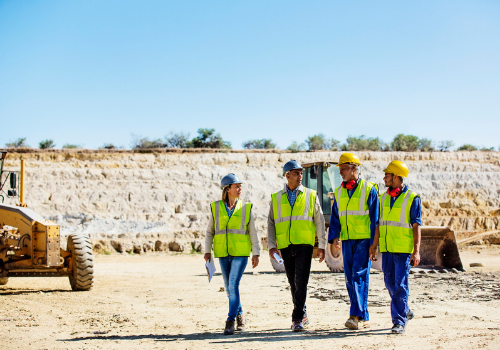Smartphones, drones, and 3D printing are changing rapidly, with advancements occurring all the time. And these are just a few examples of news technologies that are transforming the construction jobsite. New technology that once was met with fear and apprehension is being embraced in the office and at the jobsite.
Innovations in equipment, tools, and materials are rapidly helping the construction sector become stronger, more productive, and even safer. And the good news is the technology is here today. However, there are a number of hurdles that still need to be addressed to move the construction industry forward.
Challenges & Gaining Acceptance
There are several predicaments that have yet to be addressed in order to advance many construction firms both large and small.
Zach Haas, product manager, Esko Bionics explains, “The challenges facing the industry are: improving worker safety, increasing productivity, and replenishing an older work force with new workers.” He adds that, “Adopting new technology will help solve these issues.”
There already are some solutions available now. Personal-protective equipment ranging from apps to monitoring worker location to smart helmets that display information that help keep workers’ head safe are a few of these solutions. Paperless methods to communicate projects are proving every effective in enticing the younger generation who might have their eye on construction.
Despite all the many reason for adopting new technology on the jobsite there are still many contractors that are reluctant to take the tech leap. Haas explains that the basic challenge is changing how work is completed, the attitude of workers, and their overall habits. The idea of new technology will allow contractors to perform better, but it takes time gain overall acceptance.
Another big challenge that exists in the construction industry is all these emerging technologies have a high price tag for adoption. However, the good news is that some solution providers are coming to market with ways to make this a little bit more affordable.
For example, Hydro Mobile, a division of AGF Access Group, designs and manufactures mast climbing work platforms that contribute to creating hazard-free work environments. The company’s objective is to create platforms that increase worker safety and security.
Vincent Dequoy, president, AGF Group, says Hydro Mobile’s mast climbing platforms can be used to increase productivity, and it has partnered with Construction Robotics’ SAM brick-laying machine to make a mason’s job on top of the platform safer, which will ultimately save time and labor downtime as a result of injury. “Instead of having a mason working at heights, the robot can do the work instead,” Dequoy says.
Designed to work collaboratively with the mason, SAM, short for Semi-Automated Mason, is a brick-laying robot designed and engineered by Construction Robotics. SAM can increase a mason’s productivity by three times while reducing lifting by 80 percent.
The challenge is this technology can be expensive, which is way Dequoy says renting the equipment becomes an affordable way to try the technology to determine if it is worth the investment.
Another way to reduce the high expensive of high tech on the jobsite is by working with a company that provides services. For instance, many drone providers also offer drone services that way construction professionals don’t have a hefty hardware investment, and can try the tech at a lower price point.
 The Construction Technology Pay Off
The Construction Technology Pay Off
Safety, productivity, and improved bottom line: These are three key reasons to consider implementing new, and emerging technologies at the jobsite.
Productivity, for one, is a huge benefit for contractors. Haas explains the benefits of the tech are solving issues on the jobsite and a better quality product being produced.
In the case of Esko Bionics, there is a robotic arm that will take the weight of heavy tools out of the hand of the contractor, thus becoming weightless in their hand. They can use it without expending as much energy as they would and, in turn, be able to work longer and more efficiently. It also creates a safer jobsite.
But even more than that an added advantage to a higher tech job site is that there is incentive to the workers to stay. “Contractors who know that the company they are working for is offering tech like this will stay with them. There is better worker retention,” Haas says.
Technology also ultimately leads to a better bottom line. Something else that has to be leveraged is costs. Haas says the cost at first to use the new technology will deter some contractors. However, there are ways to minimize expenses.
As Dequoy says rentals are an affordable option to try the technology for a couple of months to see how it works, and this could eventually save a lot of expense in the long run. “At the end of the day, the expense of the technology can be offset by the savings in minimized insurance claims, and ultimately it creates a safer construction jobsite,” Dequoy says.
But perhaps even greater than safety, productivity, and a better bottom line is the fact that the technology is here—and contractors will soon need to embrace it, or be left behind.
Haas points out that this is coming whether contractors like it or not. The market is working on solutions to overcome the challenges. The contractors and the tech market need to have ongoing conversations about their needs. “There is more coming, there are more solutions to the issues on the jobsite,” Haas says.
Using technology on the jobsite will become more common in the construction industry. There currently are many factors affecting quick adoption. It may take some time, but the jobsite will become a high-tech area where contractors and tech work simultaneously to create the buildings of the future.
Join over 32,000 industry peers who receive construction industry news and trends each week. Subscribe to CONEXPO-CON/AGG 365.












